
Toxic ‘forever chemicals’ widespread in top makeup brands
SOURCE: The Guardian
DATE: June 15, 2021
SNIP: Toxic PFAS “forever chemicals” are widely used in cosmetics produced by major brands in the US and Canada, a new study that tested for the chemicals in hundreds of products found.
The peer-reviewed study, published in Environmental Science & Technology, detected what the study’s authors characterized as “high” levels of organic fluorine, an indicator of PFAS, in over half of 231 makeup and personal care samples. That includes lipstick, eyeliner, mascara, foundation, concealer, lip balm, blush, nail polish and more.
The products that most frequently contain high levels of fluorine include waterproof mascara (82% of brands tested), foundations (63%) and liquid lipstick (62%).
PFAS, or per- and polyfluoroalkyl substances, are a class of about 9,000 compounds used to make products such as food packaging, clothing and carpeting water and stain resistant. They are often dubbed “forever chemicals” because they do not naturally break down and have been found to accumulate in humans.
The chemicals are linked at certain levels to cancer, birth defects, liver disease, thyroid disease, decreased immunity, hormone disruption, and a range of other serious health problems.
Researchers were surprised by the high number of products that contain the dangerous chemical, said Tom Bruton, a senior scientist with Green Science Policy Institute and one of the study’s authors.
“This is the first study to look at total fluorine or PFAS in cosmetics so we just didn’t know what we were going to find,” he said. “This is a product that people are spreading on their skin day after day, so there’s really a potential for significant exposure.”
Products that were checked for individual PFAS compounds contained between four and 13 types in each. The study’s authors tested cosmetics made by dozens of brands, including L’Oréal, Ulta, Mac, Cover Girl, Clinique, Maybelline, Smashbox, Nars, Estée Lauder and more.
However, the study didn’t reveal which brands use the toxic chemicals because the authors said they did not want to “pick on” the companies involved. The Guardian could not ask companies for comment because it is unclear which use PFAS.
The chemicals, which are highly mobile and easily move through the environment and humans, can be absorbed through the skin, absorbed by tear ducts or ingested. Green Science Policy Institute notes that people who wear lipstick can accidentally ingest several pounds of the product throughout their lives.
Companies often do not list PFAS on their labels when they use the chemicals, making them nearly impossible for consumers to avoid, Bruton said. Regulatory agencies often allow companies to claim PFAS as a trade secret; however, the study found fluorine was often present in products advertised as “wear-resistant”, “long-lasting” and “waterproof”.
Bruton said cosmetic industry literature reviewed by the study’s authors indicated that PFAS were commonly used in cosmetics to make products waterproof, more durable and easier to spread.
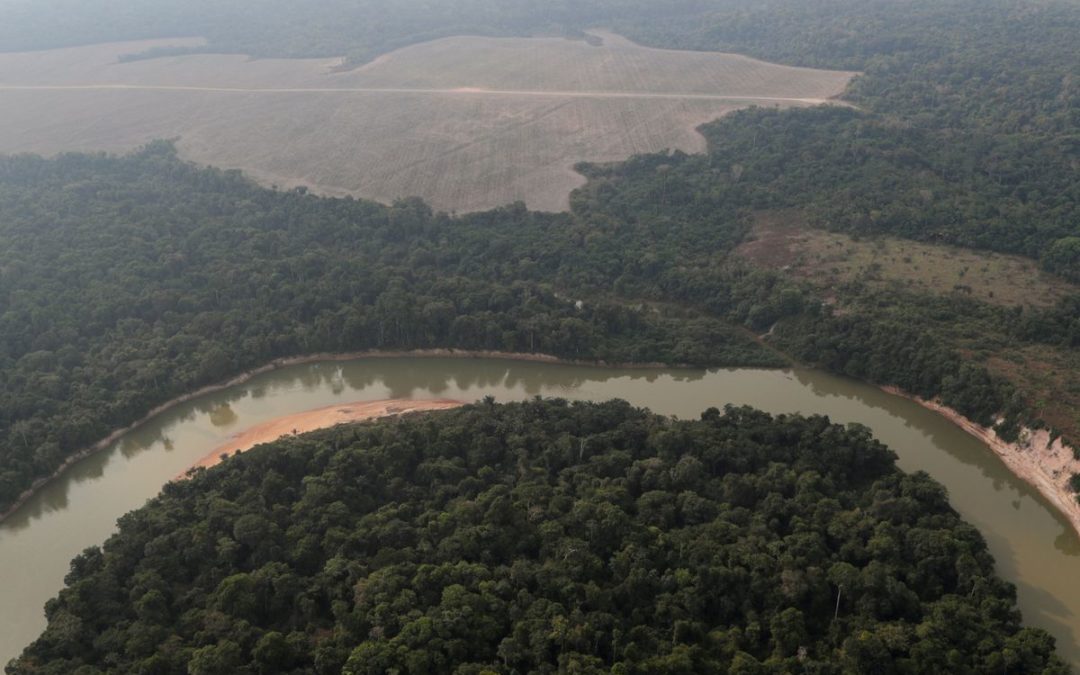
Brazil’s Amazon deforestation surges 67% in May as Bolsonaro pledges fall flat
SOURCE: Reuters
DATE: June 11, 2021
SNIP: Deforestation in Brazil’s Amazon rainforest rose for a third consecutive month in May, preliminary government data showed on Friday, with President Jair Bolsonaro yet to follow through on his April pledge to boost funding for environmental enforcement.
Deforestation soared 67% in May from the same month last year, according to Brazil’s national space research institute Inpe, with much of the land targeted for cattle ranches, farms and logging.
For the first five months of the year, the data show deforestation was up 25% compared with a year earlier, with 2,548 square km destroyed – an area more than three times the size of New York City.
Deforestation peaks during the dry season from May to October, when it is easier for illegal loggers to access the forest.
Bolsonaro pledged at an Earth Day summit in April to double funding for environmental enforcement. The next day, he signed the 2021 federal budget that slashed environmental spending.

A Bizarre Coal Industry Propaganda Program Is Infiltrating K-12 Classrooms
SOURCE: Gizmodo
DATE: June 11, 2021
SNIP: Next week, dozens of teachers from North Dakota, Minnesota, Montana, South Dakota, and Iowa will descend on Bismarck State College in North Dakota for the annual three-day Lignite Energy Council Teacher’s Seminar.
There, according to materials posted on the seminar’s website, they’ll hear presentations and panel discussions on coal’s history, geology, mining and reclamation, as well as hearing about the “career opportunities, environmental challenges, transmission and research and development topics.” The seminar, which has been held each June since 1986 (canceled only last year due to the pandemic) is run by the Lignite Energy Council, a regional trade association whose mission statement is to “protect, maintain and enhance development of our region’s abundant lignite resource”—referring to lignite coal, the least energy-dense type of coal.
Run at no cost to educators, the seminar is part of a larger program to convince teachers and kids that coal is “vitally important” and that includes worksheets for kids that identify carbon dioxide as “vital to plant life.” The entire program may also be partially funded by out-of-state ratepayers from utilities that tout their renewable energy goals.
If you’re a huge coal fan, the seminar sounds pretty dope. Teachers don’t have to pay anything to attend, a nice perk in an era of tight school budgets. Before the pandemic, the seminar featured tours of “mining operations, reclamation sites and coal conversion facilities.” According to an informational video, teachers are given a number of free goodies, including an actual piece of coal as well as ash samples (wow!) and educational materials and lesson plans “to take back to their classroom.” Many of these educational materials are available on the LEC website; among them is an “Energy and CO2 Management” study guide with several misleading facts that paint carbon dioxide as good, actually, and a terrifying “Captain Coal” coloring sheet.
In a video produced by LEC geared towards younger viewers that kind of makes me want a lobotomy, two kids start casually chatting about the lignite coal industry, as all normal elementary school kids do. One of them is really into her new coal-themed phone game; her reluctant friend (or perhaps sibling?) starts asking her questions about her new passion.
“My cousin says that coal creates pollution and wrecks the environment,” the sulky kid on the sofa says.
“That’s wrong,” his sister declares, adding that she “learned in class” that emissions from coal-based energy have decreased. “The power plants that burn coal to make electricity work really hard and spend a lot of money to make it a clean fuel.” (LEC did not answer several of our questions as of press time, including if any independent scientists had reviewed the educational materials they pass out to teachers at the seminar.)
Coal’s ties to schools run deep. Local taxes on coal mines in North Dakota and other states help directly fund schools in the area, and we’re now seeing some disastrous results as the coal market implodes. In Wyoming, a K-12 education system that relies heavily on taxes from coal production is facing serious budget cuts as demand for coal drops and mines close.
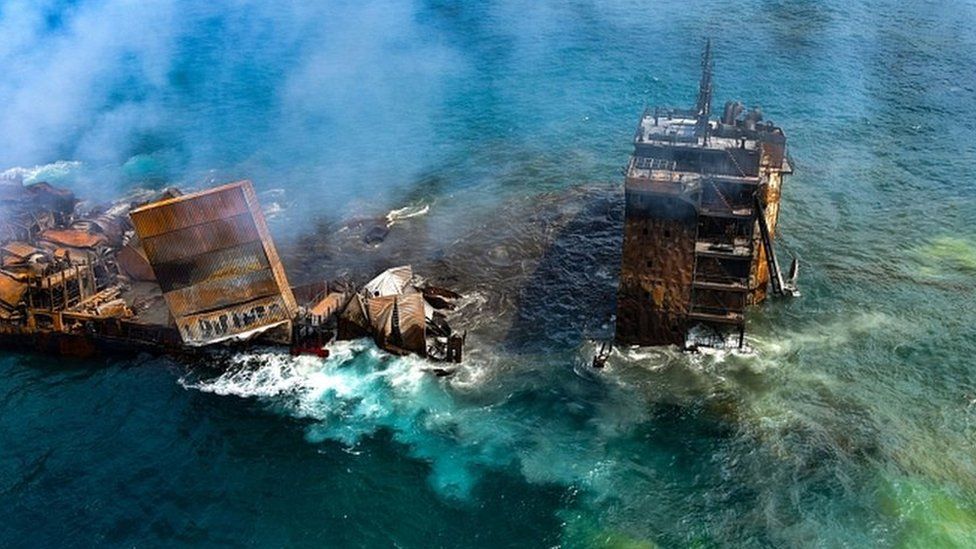
X-Press Pearl: The ‘toxic ship’ that caused an environmental disaster
SOURCE: BBC
DATE: June 10, 2021
SNIP: Earlier last month, a cargo ship carrying chemicals caught fire off the coast of Sri Lanka – leaving in its wake an environmental disaster that the island will likely have to live with for decades.
For days it stood burning off the Sri Lanka coast, plumes of thick dark smoke that could be seen from miles away. But the X-Press Pearl has now fallen silent, lying half sunken off the coast of Sri Lanka, its hull resting on the shallow ocean bed.
But though the flames have now been doused – the problems have only just begun.
Onboard the ship, there are still towers of containers stacked upon each other, many containing chemicals highly dangerous to the environment – some of these have already leaked into the water, sparking fears that it may poison marine life.
Additionally, tons of tiny plastic pellets have already washed up on local beaches nearby. And then there’s the hundreds of tonnes of engine fuel sealed in the sunken hull that could also potentially leak into the sea.
Aside from the environmental threats, there are also devastating consequences for the local communities, fishermen who overnight lost their livelihoods and will likely suffer for years to come.
One thing stands out when looking at photos of the disaster – tiny round pieces of plastic that stretch out almost as far as the eye can see.
These plastic pellets, also called nurdles, are used to make nearly all plastic goods.
“There were some 46 different chemicals on that ship,” Hemantha Withanage, a Sri Lankan environmental activist and founder of the Centre for Environmental Justice in the capital Colombo, told the BBC.
“But what’s been most visible so far are the tonnes of plastic pellets.”
Since late May, such pellets from the X-Press Pearl cargo have ended up on the Negombo beaches while fish have already been washed up with bloated bellies and pellets stuck in their gills.
The most long-lasting impact, likely to affect the country for decades, is that of chemical pollution.
Among the most dangerous elements on board the ship are nitric acid, sodium dioxide, copper and lead, says Mr Withanage.
Once in the water, these chemicals make their way into the bellies of the local marine life.
Small fish might die quickly as a result of poisoning, but bigger ones are less likely to. Instead, feeding on smaller fish, the toxins will slowly build up in their bodies over time.
This means fish from the area will be dangerous for humans – not just for now, but for years to come.
While there have been shipwrecks before, Sri Lanka has never faced one with such poisonous cargo – and the country is not well prepared for a difficult job like this.
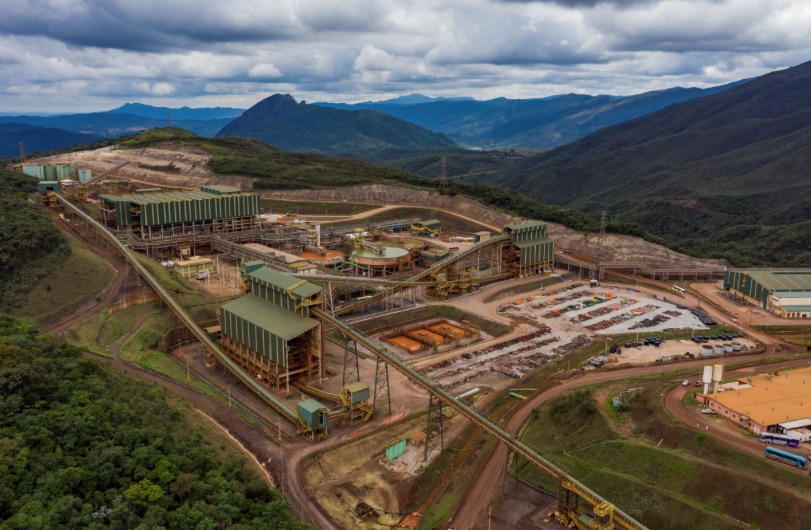
Vale’s decomissioned Brazil dam at risk of collapse, labor body says
SOURCE: Reuters
DATE: June 9, 2021
SNIP: Vale SA’s decomissioned Xingu dam is at “imminent risk of collapsing,” according to a statement on Wednesday by the Regional Labor Department for the southeastern Brazilian state of Minas Gerais.
The Xingu tailings, or mining waste, dam in the town of Mariana, already devastated by a 2015 dam rupture which killed 19 people, had its risk level elevated last October by Brazil’s National Mining Agency. Although the Xingu dam stopped receiving mining waste in 1998, Vale still employs workers there to monitor its stability ahead of a planned decommissioning procedure.
Labor auditors responsible for mandating the closure and evacuation of the surrounding area said a potential collapse at Xingu could happen via a process known as liquefaction, in which water weakens the solid materials composing a dam.
Liquefaction was previously pinpointed as a key cause of the 2019 collapse of Vale’s dam at Brumadinho, which killed 270 people.
The Regional Labor Department said in the statement on Wednesday that the area was closed after a request for documents on April 27 and an inspection on May 20. The company will have to take various technical measures to get permission to reopen the area.
“Documents presented by Vale show the Xingu dam is not stable (…), presenting a significant risk of collapse”, the surveillance group said. “The situation is extreme and puts workers at risk.”
Engineers and technicians told the auditors that the tailings at Xingu had not been properly drained and had been deposited in the dam in an uncontrolled manner.

It’s literally raining PFAS around the Great Lakes, say researchers
SOURCE: Cleveland.com
DATE: June 8, 2021
SNIP: Rain that fell on Ohio this spring contained a surprisingly high amount of toxic “forever chemicals” known as PFAS, according to raw data from a binational Great Lakes monitoring program that tracks airborne pollution.
Rainwater collected in Cleveland over two weeks in April contained a combined concentration of about 1,000 parts-per-trillion (ppt) of PFAS compounds. That’s according to scientists at the Integrated Atmospheric Deposition Network (IADN), a long-term Great Lakes monitoring program jointly funded by the U.S. Environmental Protection Agency and Canada.
The samples are part of a new IADN effort to analyze the prevalence of PFAS in precipitation across the Great Lakes. The network has other monitoring stations in Illinois, Michigan and New York and the chemicals were detected there, too.
The preliminary data is unpublished and undergoing quality reviews, but researchers say early analysis shows PFAS chemicals to be major contaminant in regional rain and snow.
“You can actually say it’s raining PFAS at this point,” said Marta Venier, an environmental chemist Indiana University, speaking to reporters convened online by the Institute for Journalism and Natural Resources (IJNR) in May.
The sites are located in Cleveland, Chicago, Sturgeon Point, N.Y., Sleeping Bear Dunes in Michigan’s northern Lower Peninsula and Eagle Harbor in the Upper Peninsula.
The team measured 38 different PFAS compounds in ambient air and rainwater. The total concentration in most samples ranged from 100 to about 400-ppt across the sites, with higher counts at urban compared to rural or remote sites.
After nearly a year’s worth of sampling, Venier said preliminary analysis also shows PFAS concentrations are orders of magnitude higher than other pollutants in the samples.
Tony Spaniola, a national PFAS activist and attorney who owns a home near the former Wurtsmith Air Force Base in Oscoda, Mich., was surprised to see significant concentrations at remote locations like Sleeping Bear Dunes and Eagle Harbor.
“It’s everywhere,” Spaniola said. “I’m not happy to say that. It’s not good news. But it underscores how ubiquitous these chemicals are. They are everywhere.”
Built solar assets are ‘chronically underperforming’ and modules degrading faster than expected
SOURCE: PV Tech
DATE: June 8, 2021
SNIP: Solar asset underperformance continues to worsen, with projects “chronically underperforming” P99 estimates and modules degrading faster than previously anticipated, risk management firm kWh Analytics has found.
kWh Analytics’ new Solar Risk Assessment, released this week, pulls together a raft of industry experts to assess the greatest risks to the global solar industry and has identified a number of serious threats which threaten to reduce investor returns and damage the industry’s credibility moving forward.
Perhaps the most notable finding from the report, which builds on a finding from last year’s edition, is that operational solar assets are continuing to experience higher than expected rates of degradation, with annual degradation in the field observed at around 1%.
It cites recent research conducted by both National Renewable Energy Laboratory (NREL) and Lawrence Berkeley National Laboratory, as well as kWh Analytics, as demonstrating that assumptions made in 2016 – that annually solar modules would degrade by around 0.5%, is outdated and underestimates annual degradation by as much as 0.5%.
kWh Analytics’ most recent figures place the median annual degradation for residential solar systems as 1.09% and non-residential systems at 0.8%. The report states that over a 20-year asset life, project degradation could therefore be underestimated by as much as 14%, resulting in severely overestimated performance and revenue forecasts produced within a P50 model.
Meanwhile, the report’s extreme weather risk section includes research from Clean Power Research which suggests that wildfires reduced energy production in Western US states by up to 6% last year.

Great apes predicted to lose 90% of homelands in Africa
SOURCE: The Guardian
DATE: June 7, 2021
SNIP: Great apes – humanity’s closest relatives, are predicted to lose a “devastating” 90% of their homelands in Africa in coming decades, according to a study.
All gorillas, chimpanzees and bonobos are already endangered or critically endangered. But a combination of the climate crisis, the destruction of wild areas for minerals, timber and food, and human population growth is on track to decimate their ranges by 2050, the scientists said. Half of the projected lost territory will be in national parks and other protected areas.
Some new areas will become climatically suitable for the apes, but the researchers doubt they will be able to migrate into these regions in time. The estimated range loss is stark, but today’s ranges in central and western Africa are already much smaller than in the past.
“It’s a perfect storm for many of our closest genetic relatives, many of which are flagship species for conservation efforts within Africa and worldwide,” said Joana Carvalho, a biologist and computer modeller at Liverpool John Moores University in the UK and who led the study. “If we add climate change to the current causes of territory loss, the picture looks devastating.”
Most great ape species prefer lowland habitats, but the climate crisis will make some lowlands hotter, drier and much less suitable. Uplands will become more attractive, assuming the apes can get there, but where there is no high ground, the apes will be left with nowhere to go.
“As climate change forces the different types of vegetation to essentially shift uphill, it means that all animals – not only great apes – that depend on particular habitat types will be forced to move uphill or become locally extinct,” said Fiona Maisels, at the Wildlife Conservation Society and part of the research team. “But when the hills are low, many species will not be able to go higher than the land allows, and huge numbers of animals and plants will simply vanish.”
The research, published in the journal Diversity and Distributions, was conducted by scientists from almost 50 universities, research institutes and conservation organisations. It analysed two scenarios, one where action is taken to curb the climate risis, habitat loss and human population growth, and one where little is done.
But the researchers found relatively little difference in the projected range losses, with 85% loss in 2050 in the first scenario and 94% in the second. “What is predicted is really bad,” said Carvalho.
Some new areas will become suitable for the great apes as the climate changes, but the animals are poor at migrating compared with many species because they reproduce slowly and have low population densities and specific diets. “The timeframe of 30 years [until 2050] is not enough,” Carvalho said.
However, the biggest protection for great apes could come from consumers in rich nations demanding sustainably produced goods. Currently the export of minerals for mobile phones, timber, and palm oil are major drivers of great ape population falls.
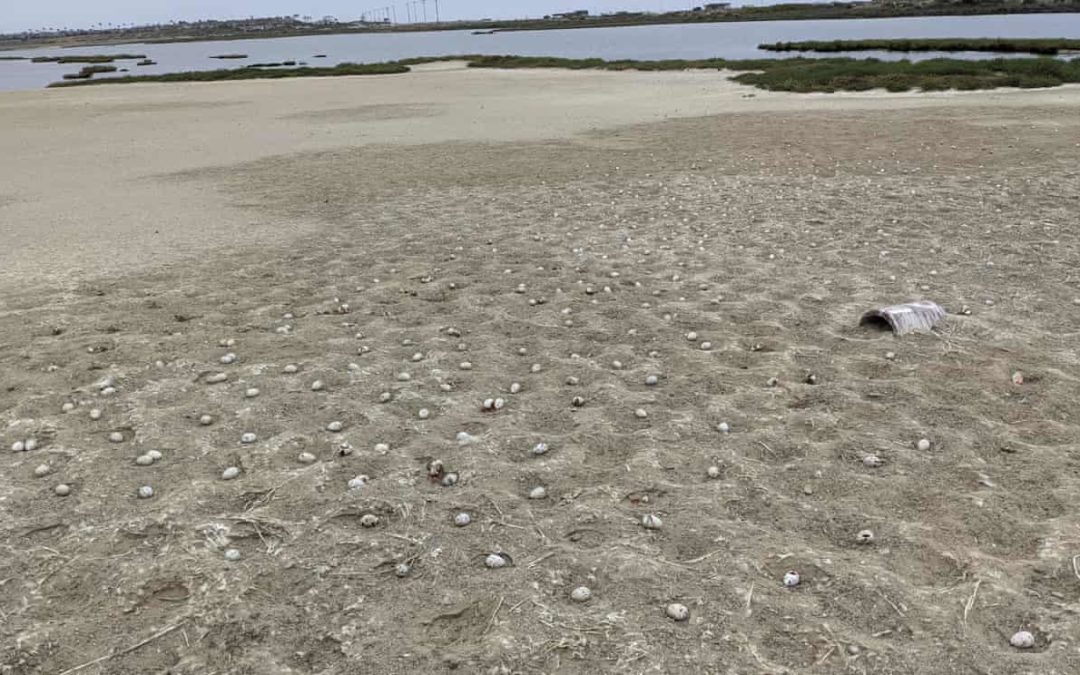
Frightened terns abandon 3,000 eggs after drone illegally crashes on beach
SOURCE: The Guardian
DATE: June 4, 2021
SNIP: About 3,000 elegant tern eggs were abandoned at a southern California nesting island after a drone crashed and scared off the birds, a newspaper reported Friday.
Two drones were flown illegally over the Bolsa Chica ecological reserve in Huntington Beach in May and one of them went down in the wetlands, the Orange County Register said.
Fearing an attack from a predator, several thousand terns abandoned their ground nests, according to the state department of fish and wildlife.
Now, during the month when the birds would be overseeing their eggs as they begin to hatch, the sand is littered with egg shells.
It’s one of the largest-scale abandonments of eggs ever at the coastal site about 100 miles (160 km) north of San Diego, according to the reserve manager, Melissa Loebl.
With the pandemic driving more and more people to outdoor spaces, last year saw about 100,000 visitors to the Bolsa Chica reserve – up from about 60,000 the previous year, Loebl said told the newspaper.
That’s contributed not only to increased drone activity, but also to more dogs and bicycles on the trails – all of which are prohibited.
“We’ve seen a significant increase in dogs, particularly off-leash,” Loebl said. “That’s devastating for wildlife and this is prime nesting season. The dogs chase the birds and the birds abandon their nests.”
Another problem is the development of multimillion-dollar homes on the hillside at the north end of the reserve overlooking the wetlands, said Nick Molsberry, a fish and wildlife warden. While most residents respect the sensitive nature of the estuary, there are a few scofflaws, he said.
“It’s residents that sometimes feel entitled, that feel they should be able to use the land as they like,” Molsberry said. Authorities are ramping up enforcement and citing people who break the rules.
At nearly 1,500 acres, the reserve is the largest saltwater marsh between Monterey Bay, just south of San Francisco, and the Tijuana River Estuary in Mexico. About 800 species of plants and animals live at or migrate to Bolsa Chica.
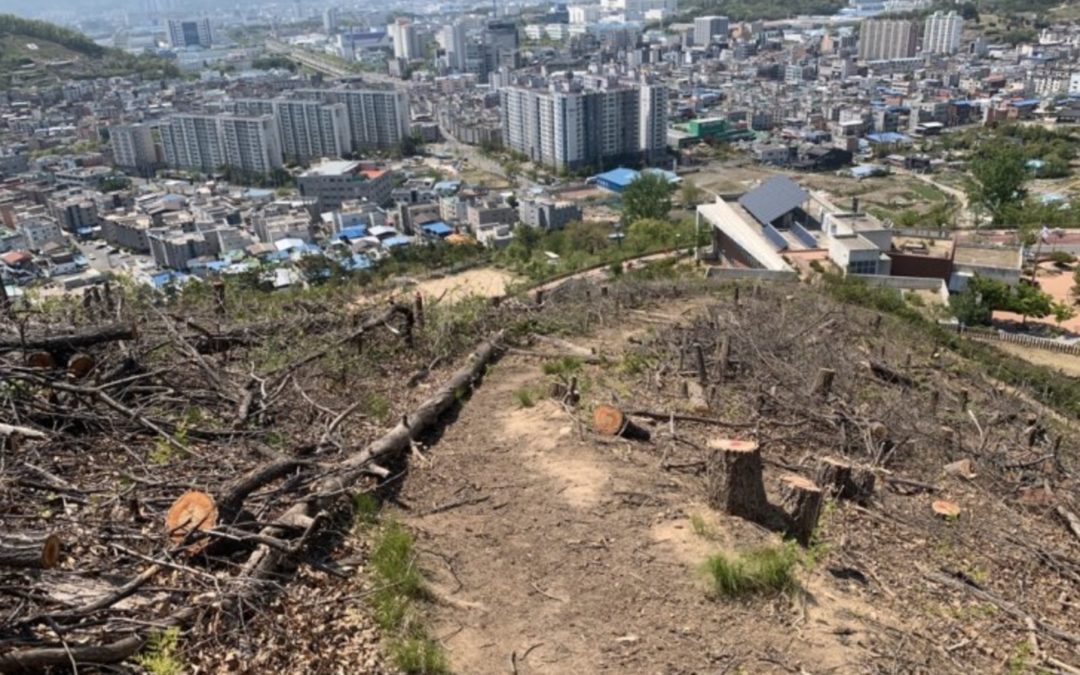
Korea’s 300 million tree harvest plan to reduce carbon emission irks activists
SOURCE: The Korea Times
DATE: May 31, 2021
SNIP: The Korea Forest Service (KFS) announced on Jan. 20 that it will cut down 300 million “old” trees and plant 3 billion new trees to increase the overall carbon absorption capability of the country’s forests.
Green Korea, a major NGO based in Seoul’s Seongbuk District, accused the National Institute of Forest Service, a state research agency under the KFS, of masterminding the controversial plan, and condemned the state agency for its disregard for trees aged 30 years or older.
“We don’t need a forestry service that is so near-sighted; it can only see the trees but not the forest,” the group said in a public statement on April 19, adding that the government’s tree harvest plan targets about 70 percent of the country’s entire forests. The group highlighted that those trees are part of the country’s rich forests that were planted in barren lands and mountains following the 1950-53 Korean War and have been conserved through decades of national forestation efforts that were launched in the 1960s.
“If the plan proceeds, all the trees 30 years or older in the country’s national parks, protected forest areas and forest reserves along Baekdu Mountain Range will have to be fell,” the group said.
Green Korea was most disturbed by the government considering local forests merely as a national tool for carbon absorption.
